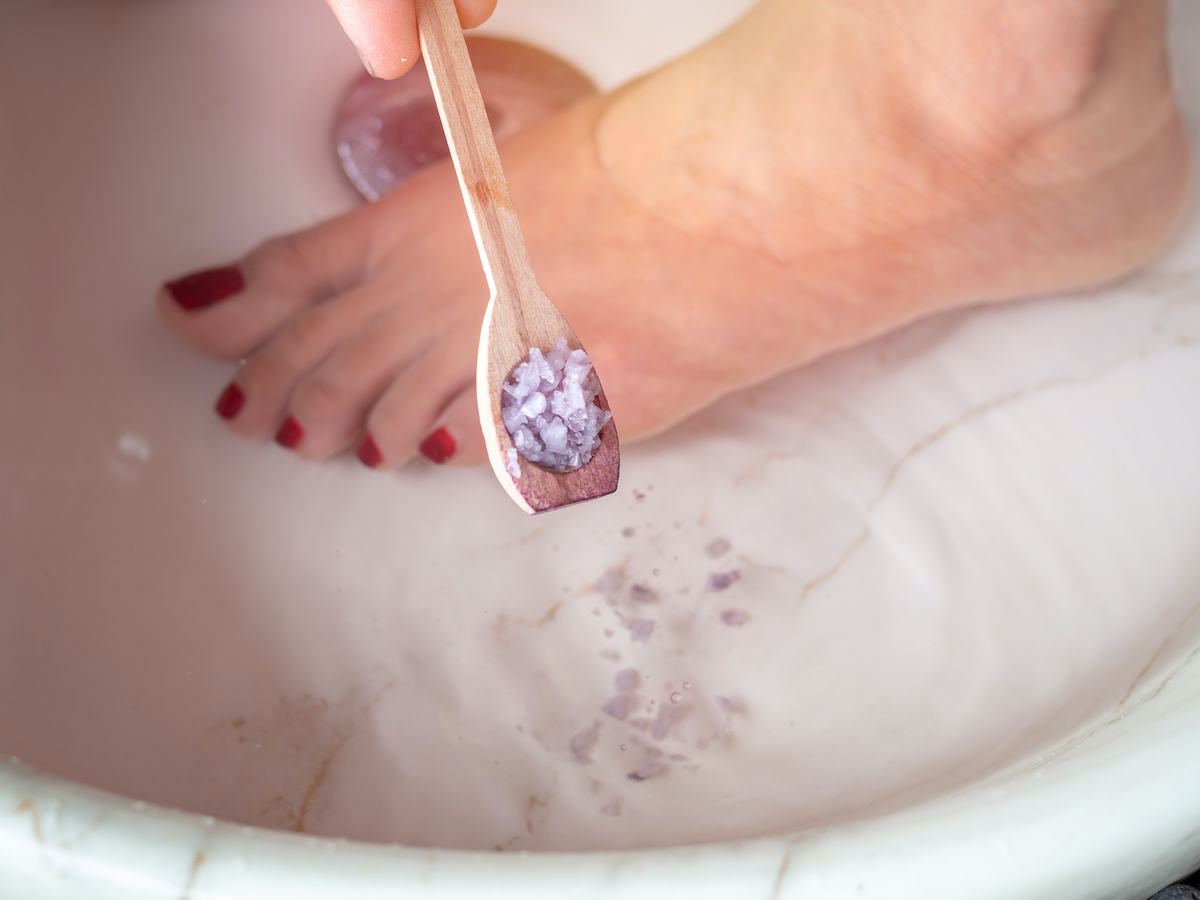A shower is refreshing, but a bath is rejuvenating, especially if you don’t forget to add the “salts.”
Bath salts are synonymous with Epsom salt, a mineral salt named after Epsom, England, where it was discovered in the town’s spring water. It was here that this “salt’s” health benefits became evident.
The Epsom salt you get may not come from this spring, but it’s the same substance—with the same health benefits. The tiny white crystals of Epsom salt look similar to table salt in its pure form, but it’s very different in composition and taste. Epsom salt is magnesium sulfate. Not the same salt you sprinkle on your favorite dishes indeed!
You may come across bath salts with added colors and flavors, but the main ingredient is still magnesium sulfate, a compound of magnesium and sulfur, both of which are known for their skin benefits.
Sulfur helps the body loosen the old and damaged cells and easily shed them. Sulfur springs have always been popular bathing spots for this very reason. Magnesium is necessary for cell repair and regeneration which explains why bathing in salts is so good for you.
Soak your feet for a quick fix
When you don’t have time for a long, relaxing bath in the tub the next best thing is a foot bath. All it takes is a basin of warm water, and you can even do it while reading, or watching TV. The minute you put your feet into the bath you will feel calm and relaxed.
How to prepare the foot bath
A fancy foot spa massager with heating and bubbles is not necessary; any plastic container that’s wide enough to accommodate your feet comfortably and deep enough to immerse them up to the ankle would do. Fill it with warm tap water and add a handful of Epsom salt. You could also add a few drops of your favorite essential oil.
Here are all the great things that an Epsom salt foot bath can do for you.
Pampers your feet
If you have an active lifestyle, your feet bear the brunt of it. Don’t they deserve some TLC at the end of the day?
Since blood from the feet has to travel up against gravity, fluid tends to collect on the feet and cause swelling and pain. As the warm water increases blood circulation, the salt will draw out extra fluid, reducing inflammation. Gently massage the feet using a roller or simply by using one foot to rub the other – this will enhance the positive impact of the Epsom salts.
Clears up fungal infections
When your feet are cramped inside shoes they retain moisture, creating the ideal conditions for fungal growth. Fungal infections such as athlete’s feet usually appear between the toes. Nail fungus is another common occurrence – especially when closed-toed shoes or boots are worn for long periods of time.
Epsom salt is not a fungicide per se. However, soaking the feet in the salt solution 2-3 times a week will help clear up the infection and prevent a recurrence. The salt creates an environment that’s hostile to fungal growth. Make sure you dry the feet thoroughly after each session, giving special care to the spaces between the toes. Follow up with a light layer of coconut oil as a moisturizer and to add antimicrobial protection.
Relieves skin dryness and itching
Immersing any part of the body in an Epsom salt solution will soften dry, callused skin. Sulfur promotes the exfoliation of dead skin, and magnesium encourages cell growth. They work together to replace dry skin with smooth, soft skin. Epsom salt mixed with olive oil can be used as a foot rub to soften stubborn spots such as the dry skin on the heels.
People with skin conditions such as psoriasis and eczema find relief from itching and dryness by immersing the affected area in the salt solution. It may help reduce dandruff and itchy scalp, too.
Relieves constipation
In case you didn’t know, Epsom salt is an FDA-approved laxative. Although the taste of this salt is not very pleasant, some people take it orally for its laxative effect. If that doesn’t work for you, soaking your feet or the whole body might do the trick. Some amount of Magnesium is said to be absorbed through the skin.
Promotes sleep
Magnesium has a role in the production of melatonin, the neurotransmitter that regulates the sleep-wake cycle. Magnesium deficiency can result in a lack of sleep and mood changes. Absorption of magnesium through the skin may be minimal, but a regular foot bath might provide enough to counteract any shortfall.
Look for USP grade Epsom salt
Did you know that there are different grades of Epsom salt? The highest grade or food grade Epsom salt is called USP grade (United States Pharmaceutical grade). Made by just two companies in the US and another one in Germany, it undergoes strict quality control checks. The lower grade Epsom salt, which is cheaper, is commonly used in gardening.
Caution:
Epsom salt has been used for thousands of years and is generally safe to use. However, if you have any open sores or cuts, avoid exposing that area to the Epsom salt solution. If you notice any redness or rash on the area where Epsom salt is used, discontinue.
-The Backyard Garden Team







